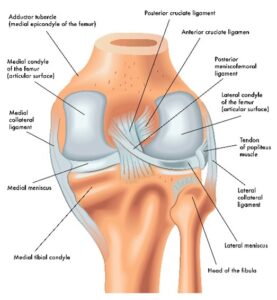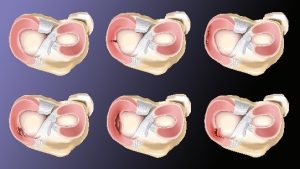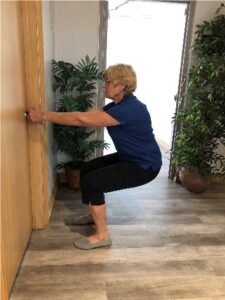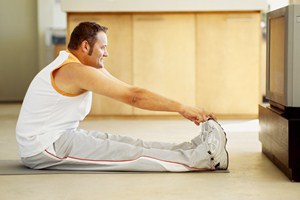Regain Full Flexibility And Get Back To The Sports You Love
Author: Julie Donnelly, LMT –The Pain Relief Expert
Editor: Dr. Steve Chaney
 While February is the shortest month of the year, to our northern family and friends it is the longest, seemingly endless, month.
While February is the shortest month of the year, to our northern family and friends it is the longest, seemingly endless, month.
Where I live in Sarasota Florida, winter brings us near-perfect days and cooler nights. It’s my favorite time of year. And of course, we all celebrate the holiday of love – Valentine’s Day!
Just a bit of trivia: In 1868, Richard Cadbury released the first Valentine’s Day box of chocolates, followed in 1902 with the first conversation hearts from the New England Confectionery Company. In the 1840s, Esther A. Howland created the first commercial Valentine’s Day cards in the United States. Hallmark first offered Valentine’s Day cards in 1913 and began producing them in 1916. (Thanks to Wikipedia for all this interesting info).
What Is A Meniscus ?
?
One of my clients asked me to talk about a medial meniscus tear, and that is a topic that is “near and dear to me” because I had a severed medial meniscus from a ski accident.
The meniscus is something that many people aren’t familiar with, unless they have had a meniscus tear, then you definitely know all about it. It hurts!
All of the major joints are complicated with many ligaments and other structures, each having an important function.
The knee joint is straightforward.
The lateral (outside of knee joint) and medial (inside of knee joint) meniscus cushion the femur (thigh) bone and tibia (shin bone) so your knee can bend and straighten without wearing down the bone.
Ligaments that surround the knee joint hold the bones together and form a tight, secure joint.
How Does A Meniscus Tear?
 Trauma to the knee joint, especially a twisting movement, will tear the meniscus.
Trauma to the knee joint, especially a twisting movement, will tear the meniscus.
In 1995 I had a ski accident where I severed the medial meniscus, but I didn’t have insurance at the time. I paid the $1000 for an MRI to find out why my knee was in so much pain, and why my knee felt like it was going to totally separate.
It turned out that I not only severed my left medial meniscus, I also tore my anterior cruciate ligament (ACL), The ACL holds your bones together from front to back. When this tore, I felt like whenever stepped down my upper leg still kept going forward. It was a scary feeling, I felt like my leg was going to come apart at my knee. Yikes!
Recovering From A Meniscus Tear
I need to remind you that I am not a doctor, nor do I have medical training to advise you about what to do. This message isn’t meant to replace your physician’s advice.
When I found myself with a severed medial meniscus and a torn ACL, and I didn’t have medical insurance, I didn’t know what to do! Fortunately, I was working along with Zev Cohen, MD. My therapy practice was in Dr Cohen’s office, and he would often ask me to see one of his patients who were in pain when he knew it wasn’t caused by any systemic or visceral problems. I totally respected Dr. Cohen because he truly wanted his patients to get better, even if it meant he was going to bring in a massage therapist!
As a result, when Dr. Cohen told me that my meniscus would heal with scar tissue, I believed him. And it worked! The only glitch was the scar tissue made my knee stiff, so I started to do a movement that I believed would stretch the scar tissue enough so I could bend my knee properly. And that worked too!
Regain Full Flexibility And Get Back To The Sports You Love
A Stretch for AFTER Your Meniscus Heals
Caution: Do Not do this stretch until your knee is completely healed.
 Stand with your feet directly under your hips. Hold on to a closed door, being sure you’re on the side of the door that pushes out, so you are pulling it shut as you do the stretch.
Stand with your feet directly under your hips. Hold on to a closed door, being sure you’re on the side of the door that pushes out, so you are pulling it shut as you do the stretch.
While keeping your knees straight up from your ankle, squat down, stopping when you start to feel pain in your knee. Stay there, and then go just a little bit further. Don’t push, it’s better to go slowly so your muscles stretch safely. Scar tissue is really dense, it doesn’t stretch easily (if at all) so you need to slowly allow the scar tissue to loosen.
I can’t guarantee that this will work for you but let me tell you what happened to me. I was doing this stretch multiple times a day, stopping when it would be too painful – or when I just ran out of time. Then one day – success!
One day I was squatting down and suddenly something released, and I ended up sitting on the floor with my knees totally bent!
Since then, I’ve been able to get back to skiing, and I have ZERO pain!
Wishing you well,
Julie Donnelly
These statements have not been evaluated by the Food and Drug Administration. This information is not intended to diagnose, treat, cure, or prevent any disease.

